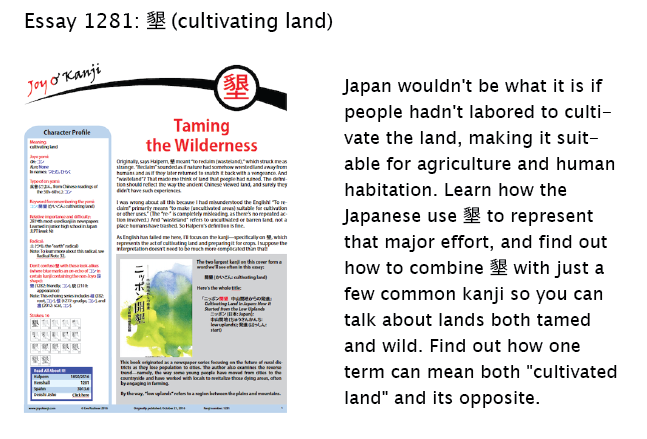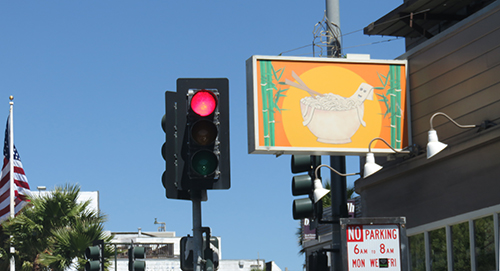Slippery as a Noodle
This week I came upon a great word. But before I tell you why it's so great, I'll let you guess! Here it is:
四角四面 (しかくしめん) 4 + corners + 4 + surfaces
Given the breakdown, what could this word mean? Choose one option:
a. rectilinear
b. tidy
c. logical thinker
d. inflexible; sticking to rules too much
I'll block the answer with a preview of the newest essay:

Okay, I'm back. The answer is d. That is, 四角四面 (しかくしめん: 4 + corners + 4 + surfaces) means "inflexible; sticking to rules too much." What an unexpected insult from a country with so many rules!
This expression made me think about how 面 is one slippery noodle when it comes to the many meanings of this character:
• In 方面 (ほうめん: direction), 面 represents "side, direction."
• In 場面 (ばめん: scene), the same character means "side, aspect."
• By contrast, it means "face" in 面接 (めんせつ: interview), 表面 (ひょうめん: surface), and 面白い (おもしろい: interesting; funny).
The last one surprised me, as I couldn't see the connection to faces. Dictionaries break down the word as 面 (face) + 白 (white), explaining that 面白い originally meant that a brightness appears right in front of someone’s face (eyes). Ah, so it's as if someone has seen the light!
Given all that, what's a kanji like 面 doing in a word like this:
面々 (めんめん: each one; all)
Halpern says that 面 again just means "face" here. “Each face” implies “everyone." According to Kanjigen, the “everybody” definition is specific to Japanese; in Chinese 面面 means “every aspect.”
If you think you have a handle on all the slippery surfaces of 面, you haven't considered another definition—"noodle"—an item that is physically slippery! Take a look at this photo:

Photo Credit: Eve Kushner
This sign is for the Osaka restaurant 四天王 (してんのう), which can be a Buddhist term meaning “the Four Heavenly Kings (Dhrtarastra, Virudhaka, Virupaksa, and Vaisravana)” or a fun figurative spinoff meaning “the big four (i.e., four leaders in a given field).” In this case, the second definition is relevant, referring to the four main ingredients in ramen: noodles, broth, barbecued pork, and an “essential sauce,” a richly flavored concentrate to which broth is added to make soup.
As I wrote in essay 2128 on 拉 (to abduct; pull; crush; ラ sound), the Japanese sometimes write “ramen” as 拉麺, though ラーメン is much more common. What we’re seeing here with 拉面 is Simplified Chinese, as 麺 turns into 面 in the Simplified system.
One noodle looks pretty happy in this shot from San Francisco!

Photo Credit: Eve Kushner
And hey--it's not only a noodle but also a face! We've come full circle!
Have a great weekend!

Comments